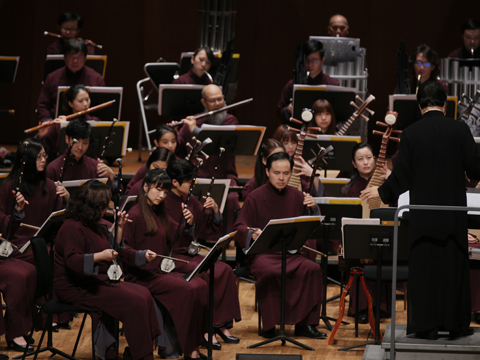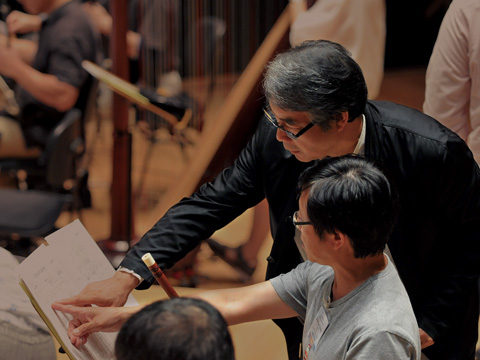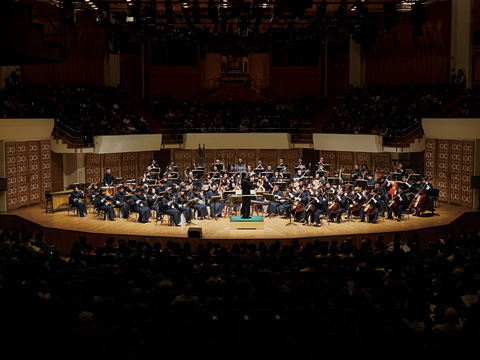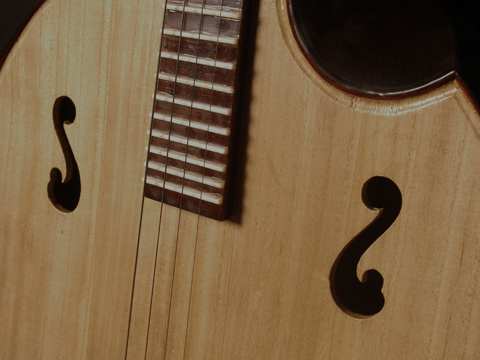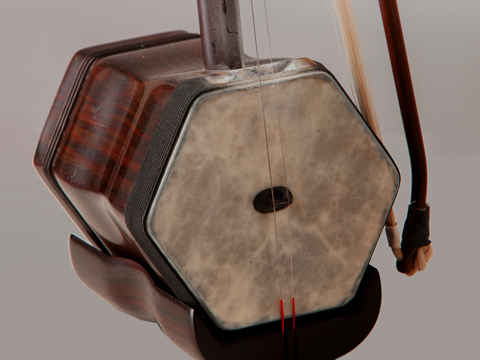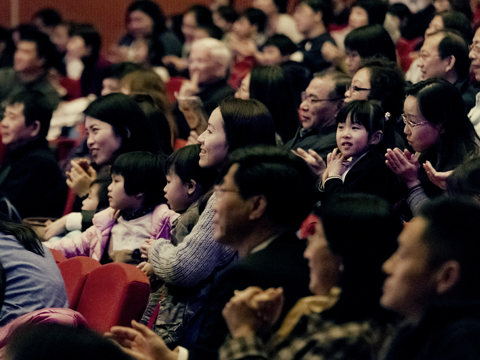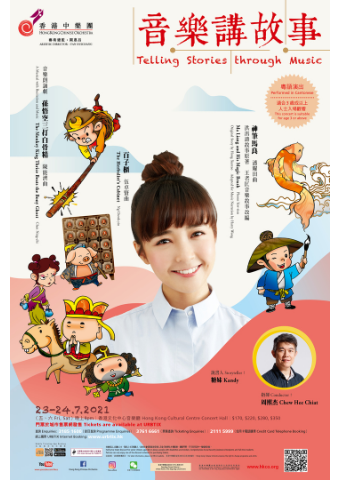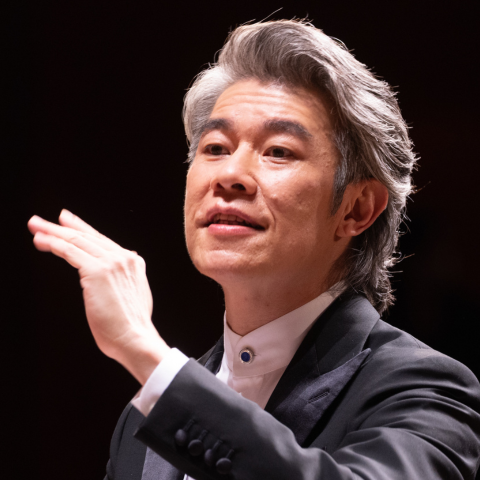A new approach to storytelling
A whole new experience for the audience
Chow Fan-fu
Though everyone loves a good story, yet to be able to tell a story skilfully and engage both young and old in the audience, or even produce a whole new experience for them, is no easy task. This Storytelling through Music concert features a joint performance by the full-scale Hong Kong Chinese Orchestra under the baton of Chew Hee Chiat and storyteller Kandy whose new approach to storytelling through music will bring a whole new experience to the audience.
Three stories with very different content
Programme music often carries a storyline. The three works to be performed by the Orchestra in this concert are three Chinese stories to be told – The Herbalist’s Cabinet by Hong Kong composer Ng Cheuk-yin; Ma Liang and His Magic Brush composed by Singaporean composer Phoon Yew Tien, based on the original story by Hong Xuntao; and The Monkey King Thrice Beats the Bony Ghost by local composer Chen Ning-chi.
All three are programme music pieces with distinct storylines.
In The Herbalist’s Cabinet, the herbs in the herbalist’s cabinet with different medicinal purposes are referenced to the array of Chinese musical instruments on the stage before our eyes. Ma Liang and His Magic Brush, full of imagination and dramatic twists and turns, comes from folklore. It tells an imaginative and interesting story of the relationship between humankind, animals and Nature through the hard-working and selfless Ma Liang and his magic brush. The Monkey King Thrice Beats the Bony Ghost comes from the Chinese classic novel Journey to the West. A fabulous account of part of Monk Tripitaka’s journey to the west, it tells how the righteous Monkey King beats the evil Bony ghost in a series of fierce magic-filled fights.
Morals behind the stories
Peter and the Wolf by the Russian composer Sergei Prokofiev is a brilliant example of Western programme music where commentary complements the music. But Kandy’s role as storyteller for these three pieces works quite differently: not only does Kandy’s voice form an integral part of the music, she will even adopt different performance formats according to the content and nature of the stories to make the “characters” in the stories more vivid and three-dimensional, so that the audience would resonate with the music more easily and even feel as if they are in three entirely different settings.
But for a story to be engaging while being performed and to linger in the minds of the audience after, calls for something more than a captivating and moving storyline; it often has to do with the underlying message of the stories themselves. The Herbalist’s Cabinet is a story about Chinese musical instruments; Ma Liang and His Magic Brush explores the relationship between humankind, animals and Nature; The Monkey King Thrice Beats the Bony Ghost narrates the battles between the Monkey King and the Bony Ghost; all three stories have an interesting storyline and are captivating. The powerful musical expressiveness of a full-scale Chinese orchestra is effective in bringing out further the rich imagery of the three storylines. Together with the unique charm of Kandy’s art, they bring storytelling to a new level and enable a whole new experience for the audience. Yet, in the end, a truly new experience should ideally include insights into the underlying morals behind the all too familiar stories. In other words, will the audience gain fresh insights from this experience?

